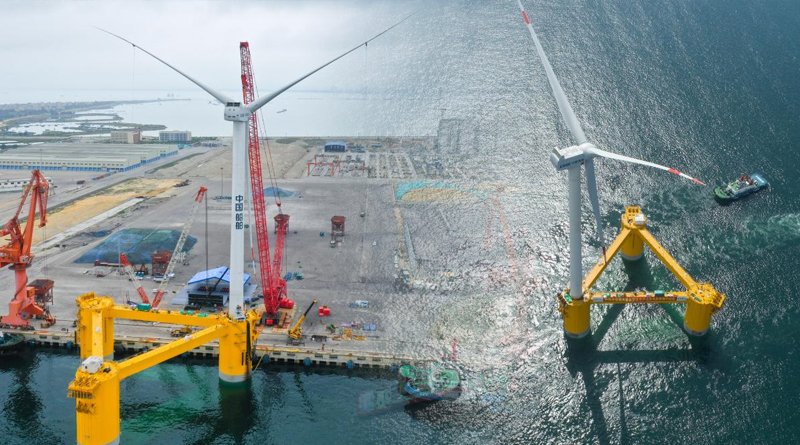The floating body assembly of China’s first deep-sea floating wind power platform, which the China National Offshore Oil Corporation (CNOOC) invested in and built is finished.

The floating body assembly of China’s first deep-sea floating wind power platform, which the China National Offshore Oil Corporation (CNOOC) invested in and built, was finished on Tuesday, according to Science and Technology Daily.
The first “Double Hundred” offshore wind power project in the world, with a water depth of more than 100 metres and an offshore distance of more than 100 kilometres, has made significant progress with the completion of the assembly of the floating body at the project’s Qingdao site.
In China’s southern island province of Hainan, where strong winds and large ocean waves presented a significant design challenge, the platform will be installed in an offshore oil field 136 kilometres from Wenchang.
The project uses online tensioner for the first time in China to provide stable mooring fixation, and it can still be moored firmly when the horizontal displacement reaches 33.8 metres in extreme weather, according to Hua Bin, project manager of CNOOC Guanlan.
The project uses multi-point mooring to fix the wind power platform, which partially utilises the mooring system of the original floating production storage and offloading unit (FPSO).
After the project is put into operation, the electricity produced by the turbine will be connected to the offshore oilfield group’s power grid for the production of oil and gas, with a capacity for 22 million kilowatt hours of annual power generation.
This will save 7.73 million cubic metres of fuel gas and reduce carbon dioxide emissions by 22,000 tonnes.
According to Li Nan, there are numerous potential applications for floating wind energy. It can coordinate the growth of marine ranching, seawater hydrogen production, marine tourism, marine mineral resource development, and the cross-border integration of comprehensive energy islands. It can also consume locally and supply power for offshore facilities. the marine industry’s contemporary ecology.
With the advancement of technology and widespread development, a superimposed green power premium and floating wind power are anticipated to surpass expectations and achieve parity. It is predicted that the total installed capacity will surpass 500,000 kilowatts by 2026.